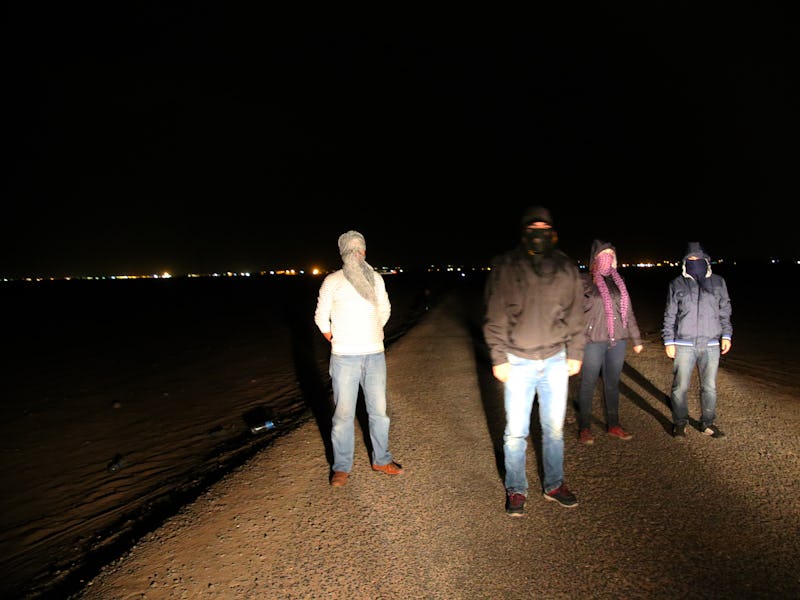Siege Warfare Defines the Syrian Conflict and Civilians Are Losing
The grinding stalemate isn't slowing the loss of life.

Over one million people spread over 46 cities and villages are feeling the effects of life under siege. They are starving and they are dying of treatable disease because, a new report makes clear, of decisions made by Syrian president Bashar al-Assad. The report, which comes from the monitoring group Siege Watch, The Syria Institute in DC, and the Dutch peace organization Pax claims that 1.5 million Syrians are under serious threat of becoming besieged. It’s a number that is all the more alarming given the current death toll, which is climbing past 400,000. Many of those deaths have come because non-combatants have been unable to escape active fighting or receive aid.
The report points out that this is not a product of unfortunate happenstance. “The convoys that have been approved and implemented have not reached all of the besieged communities and in most cases have failed to bring in sufficient quantities of food aid,” the report states. “The majority of medical aid continues to be removed from convoys.”
No small wonder then that an increasing number of Syrians have attempted to make the dangerous journey to Europe. Those who remain in the country are often at risk of starvation, malnutrition, a lack of access to medicine, an inability to travel short or long distances due to checkpoint or sniper fire, and lack of water access. In one particularly dramatic example, after aid trucks reached Madaya, a rebel-held city in rural Damascus governorate, the UN undersecretary for humanitarian affairs tweeted out that “we found some 400 people that need to be evacuated IMMEDIATELY for medical treatment or face dying.”
The new report from Siege Watch added the eastern portion of Aleppo City, one of the most symbolically important rebel-held areas, to its “watchlist,” which means it is suffering siege-like conditions. As of the reporting, there was one road in and out of the city, which, if overtaken by the regime, could plunge 300,000 residents into potential starvation.
Beginning in February of this year, the opposition and government forces entered into a fragile truce and the beginnings of a potential diplomatic resolution to the war. Early cynicism to the efficacy of the effort has unfortunately worn out, as the regime and to a lesser extent opposition groups violated the cessation of hostilities, as the truce was known. That cessation has effectively broken down, according to the Syria Ceasefire Monitor project.
Despite the increased diplomatic efforts – which stalled in April – not a single siege was lifted from February to May, when reporting for the current study ended.
The report describes an area as under siege when “it is surrounded by armed actors who restrict the movement of goods and people into and out of the area. A siege is an intentional tactic meant to deprive a populated area of the essentials needed for life.”
Crucially, the Siege Watch report numbers break from official United Nations findings. Official UN figures put the number of Syrians under siege at 592,000 – far below what PAX and The Syria Institute found. This undercounting, the groups say, can result in a skewed impression of just how dire the situation is across vast swaths of the country. “Only when the full scope of the problem is recognised by the international community will the necessary response be undertaken to provide relief to long-besieged Syrians,” said Marjolein Wijninckx, Syria programme manager at PAX, in a statement.
Deliberately putting cities and villages under siege is a violation of multiple UN resolutions, as well as the Geneva Conventions, which makes it a war crime. There is overwhelming evidence that the regime has done just that. “As protests gave way to all-out war, and the country tried to adjust to the sudden disruption of daily life, the government devised a devastating strategy to combat rebel forces: It bombed the increasingly long bakery lines caused by the scarcity of wheat in contested areas of the city,” reports Emma Beals in a fantastic new story at Vice. “These bombings have continued throughout the conflict; in a recent attack, Russian airstrikes reportedly struck a bakery that had provided bread for nearly 45,000 people.”
Other civilian targets, such as schools and hospitals, have been regularly targeted over the course of the war. More than 700 doctors and medical workers have been killed since the war began, according to a recent United Nations investigation. Most of the deaths were determined to be from aerial attacks, which implicates the Syrian and Russia governments, as neither opposition groups nor ISIS have air attack capabilities.